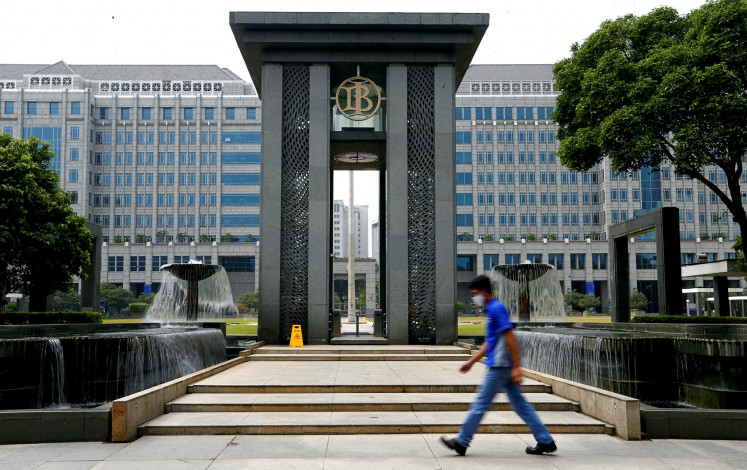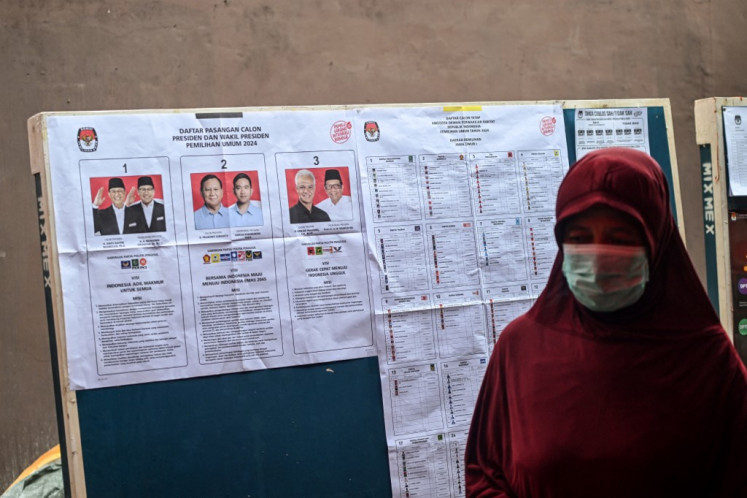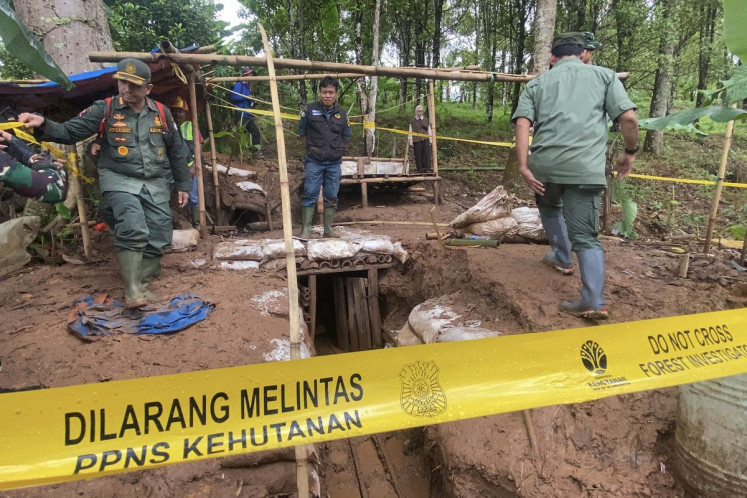Popular Reads
Top Results
Can't find what you're looking for?
View all search resultsPopular Reads
Top Results
Can't find what you're looking for?
View all search resultsHow can we stop tuberculosis?
Recent data from the World Health Organization (WHO) shows that indicators of overall health status in Indonesia have improved significantly over the last two and a half decades
Change text size
Gift Premium Articles
to Anyone
R
ecent data from the World Health Organization (WHO) shows that indicators of overall health status in Indonesia have improved significantly over the last two and a half decades. Life expectancy, for example, increased from 63 years in 1990 to 71 years in 2012. However, Indonesia still struggles with a high incidence rate of tuberculosis (TB). According to the Global Burden of Disease Study, TB was the third-most lethal disease in Indonesia from 2005 to 2016, due to a high prevalence rate and the country’s large population. Sadly, Indonesia is the world’s second-largest contributor of TB patients.
As the world commemorates World Tuberculosis Day on March 24, it remains unacceptable that 300 people here die every day because of TB, which is preventable.
TB is caused by Mycobacterium tuberculosis, an airborne bacteria that commonly damages the lungs. This deadly bacteria can easily enter some parts of the body with no symptoms, causing latent infection. According to a 2014 study from the London School of Hygiene and Tropical Medicine, 47 percent of Indonesians have latent TB. It can become active when the immune system drops dramatically, with common causal factors being HIV, diabetes, malnutrition or active smoking.
Tuberculosis is an indiscriminate disease, which can be contracted by anyone regardless of gender or socioeconomic status. It does, however, predominantly impact people in the prime of their lives, from 15 to 59 years old. This decreases their ability to contribute to the economy and support their families because they often become unable to work. Research published in The International Journal of Tuberculosis and Lung Disease shows loss of productivity due to illness in Indonesia cost approximately Rp 9.6 trillion in 2015. This number will continue to increase if more people are detected with TB, and if it remains poorly controlled.
While the percentage of successful treatments reached 87 percent last year, Health Ministry data indicates that the case detection rate of TB still remains under 50 percent. Progress in the campaign to eliminate TB in Indonesia remains slow, with new cases emerging every year, and many of the infected remain untreated. In fact, treatment is the best prevention for TB. The more people with active TB who receive treatment, the smaller the risk of spreading the disease.
The eradication of TB is a challenge, but it can be achieved through the momentum of the current era of the global Sustainable Development Goals, which involves actors from different sectors competing to achieve development targets, including in the health sector. The government has also committed to speeding up the eradication of TB through Health Ministerial Regulation No. 67/2016, the first specific regulation on TB that details measures to overcome TB — but given the country’s vast challenges, it states that the targeted year of zero TB in Indonesia is still a few decades away in 2050.
Fever and the coughing up of bodily fluids are the main symptoms of TB. A serious issue in case detection, however, is that in Indonesia, a chronic cough is rarely considered symptomatic of a disease. The 2013 Prevalence Survey of Tuberculosis shows that of 8,377 participants, only 12.3 percent with a cough of 14 days or more reported their symptoms. Of these patients, 43.1 percent did not get treatment, 30.8 percent self-treated and only 26.1 percent actually went to a health facility. This results in delayed treatment or maltreatment of this serious disease and an increase in the prevalence of the multidrug resistant strain (MDR) of TB.
While the government ensures that all treatment can be accessed through the National Health Insurance System, global data suggests that only half of all MDR TB patients will be successfully cured. With Indonesia experiencing 7,000 new MDR TB cases annually, this will cause greater strain on the system’s budget, with only small returns in improved health.
The data from the prevalence survey shows that of the participants who had been diagnosed, 36.5 percent went to private hospitals. This number highlighted the need for strong private hospital administrative optimization in TB treatment. The private hospitals, however, contribute to a large number of un-notified TB cases in the Integrated Tuberculosis Information System, a national TB program.
In 2015, WHO estimated nearly two-thirds of TB patients in Indonesia had not been notified, and the status of their care remained unknown. As such, Indonesia is home to nearly 20 percent of the world’s missing TB cases. Understanding where patients go for care is vital to enabling the strategic planning of services to reach them more effectively and allowing systematic monitoring to evaluate the outcomes of every patient who has commenced treatment.
TB incidences could be forced down quicker, by as much as 30 percent per year, if new cases are found quickly enough to eliminate transmission. TB spreads in households and communities, ranging from rural villages to urban house blocks, schools to workplaces, and crowded places like industrial environments. Community-oriented efforts can both help prevent TB spread and support diagnosis and treatment. This can happen through educating the public and health workers, finding people with TB symptoms and getting them to use diagnostic and other treatment services, offering daily support for those taking the medicines and advocating for improved services.
Awareness raising and availability of knowledge services can facilitate early diagnosis and appropriate treatment. Advocacy, communication and social mobilization activities can help build public knowledge and foster positive attitudes and practices that contribute to efforts to stop TB. Such efforts are most powerfully organized from the inside, by people who really know and belong to the community.
Community participation can be strengthened to improve the performance of a TB control program with a comprehensive approach. However, it should be followed by efforts to increase the health system capacity because, by any standard, the fact that 300 people die of TB every day, when steps can be taken to prevent this, is unacceptable in Indonesia.
___________________________
Aghnia Jolanda Putri is a physician who graduated from Andalas University in Padang, West Sumatra. Ika Kartika Febriana is a political science graduate from the University of Indonesia. Both work for the Center for Indonesia’s Strategic Development Initiatives (CISDI).










